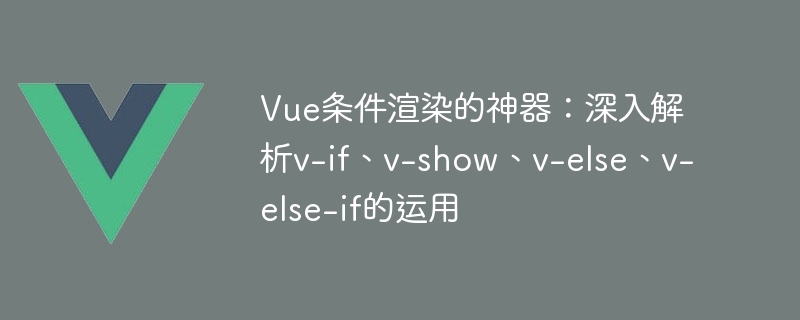

Vue is a very popular front-end framework that provides a wealth of features to help us build highly interactive web applications. Among them, conditional rendering is an important feature of Vue, through which we can dynamically display or hide an element based on conditions. In Vue, we can use v-if, v-show, v-else, v-else-if and other instructions to implement conditional rendering. Below we will analyze the use of these instructions in depth and provide specific code examples.
First we introduce the v-if instruction. The v-if directive is used to conditionally render elements based on the truth or falsehood of an expression. When the expression is true, the element is rendered to the page; when the expression is false, the element is removed from the page. Here is an example:
这是一个条件渲染的示例
In the above code, we use the v-if directive to control the display and hiding of div elements based on the value of the show variable. If show is true, the div element will be rendered to the page; if show is false, the div element will be deleted.
Next we introduce the v-show command. The v-show directive is also used to conditionally render elements based on whether an expression is true or false. However, unlike v-if, v-show only displays and hides elements by modifying the CSS properties of the element. The element is actually always exists on the page. Here is an example:
这是一个条件渲染的示例
In the above code, we also use the show variable to control the display and hiding of div elements. If show is true, the display attribute of the div element is set to block, and the element is displayed on the page; if show is false, the display attribute of the div element is set to none, and the element is hidden on the page.
In addition to v-if and v-show, Vue also provides v-else and v-else-if instructions to implement multi-condition rendering. The v-else directive is used to render an element when the condition of the v-if directive is not true. The v-else-if directive is used to render an element when the condition of the v-if directive is not true and a certain condition is met. Here is an example:
优秀
良好
不及格
In the above code, we determine the student's score based on the value of the score variable and conditionally render different text. If the score is greater than 90, the rendering is "excellent"; if the score is greater than 80, the rendering is "good"; otherwise, the rendering is "failed".
To sum up, v-if, v-show, v-else, and v-else-if are the four important instructions for conditional rendering in Vue. By using them flexibly, we can dynamically show or hide elements based on conditions, making web applications richer and more interesting. In actual development, we can select appropriate instructions according to needs to implement conditional rendering, and apply them in conjunction with specific data and logic. I hope this article can help everyone get familiar with and use conditional rendering.
The above is the content of this article, I hope it will be helpful to you!
The above is the detailed content of Vue conditional rendering artifact: in-depth analysis of the use of v-if, v-show, v-else, v-else-if. For more information, please follow other related articles on the PHP Chinese website!




